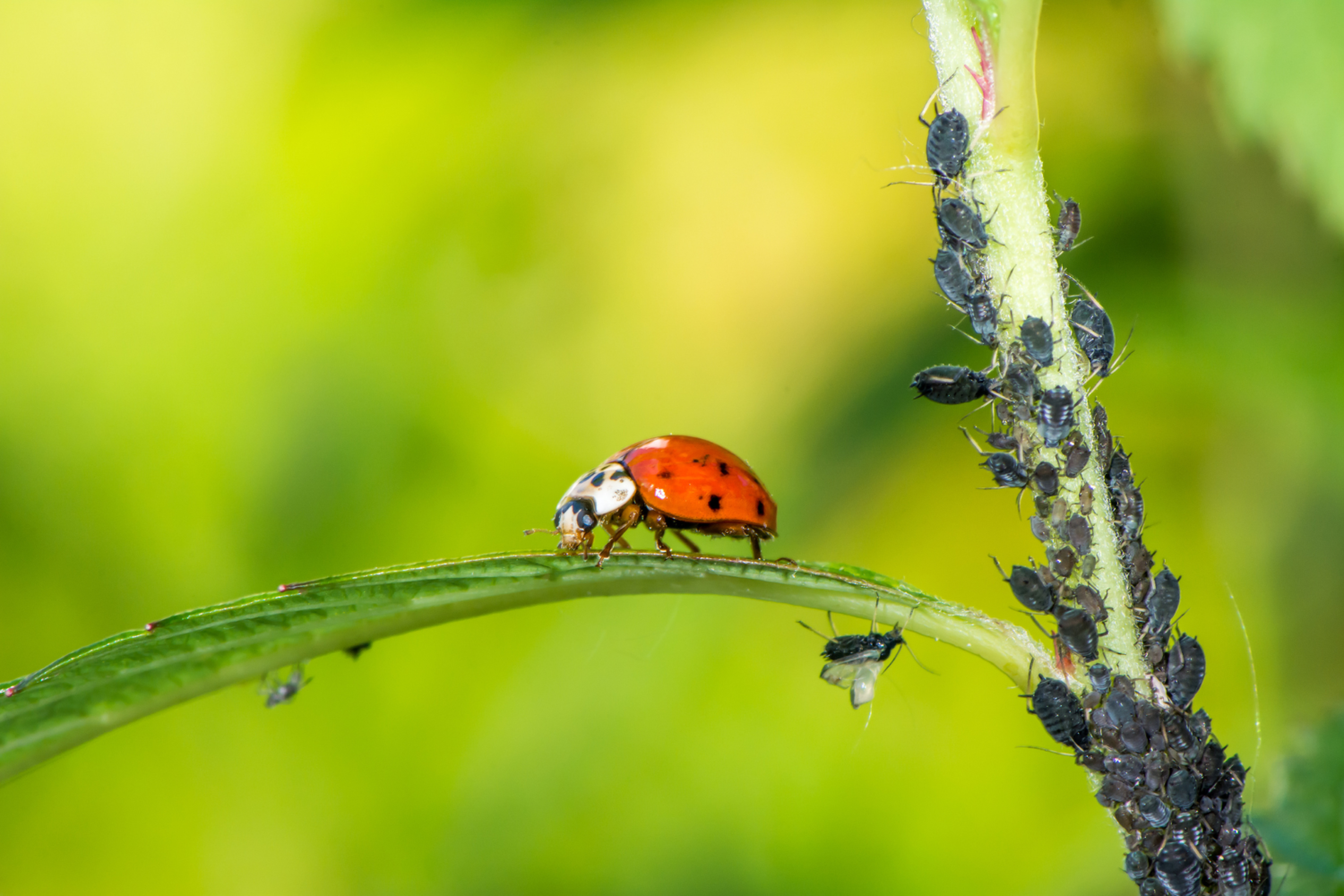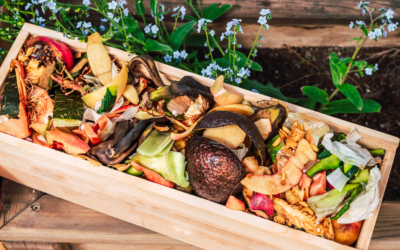Climate Resilience Through Regenerative Agriculture
03
March, 2023
By Pauline Bautista
Agriculture is the leading cause of habitat destruction and makes up for around 80% of global deforestation. The solution to healing our planet can be found in our soils. Regenerative agriculture encourages us to transform our food systems in ways that work with the Earth – not against it. Read more on how regenerative agriculture revolutionizes farming for a healthier planet.
The Demand For Regenerative Agriculture
Our global industrial food system depends on fossil fuels, heavy water and soil usage, and fertilizers to maximize food production. This massive reliance on natural resources heavily contributes to our current climate crisis. In fact, industrial agriculture plays a significant role in various forms of environmental degradation, such as air, water, and soil pollution, biodiversity loss, and deforestation. And so regenerative agriculture comes to our rescue. This approach to farming aims to reverse our climate crisis by restoring soil biodiversity and integrating all aspects of nature (e.g. livestock and compost) in the production of plants and food.
A Step Beyond Sustainability
Industrial farming depletes our natural resources at an unsustainable rate. It currently makes up for 19-29% of total greenhouse gas emissions. Sustainable farming intends to reduce the environmental damages that have been caused by the overexploitation of natural resources. However, the present conditions of our environment, particularly of our soil, are already destroyed. At this rate, the Food and Agriculture Organization of the United Nations (FAO) predicts that 90% of the Earth’s topsoil is at risk for soil erosion by 2050. Regenerative agriculture recognizes the need to improve our soil quality and local environments. It goes beyond the practices of sustainable farming by focusing on restoring the health of our ecosystems rather than maintaining the poor state of our environmental conditions.

Topsoil is the top layer of our soil that contains the highest amount of organic matter, nutrients, and organisms needed for plants to thrive.
The Principles of Regenerative Agriculture
One of the key goals of regenerative agriculture is to regenerate the soil. Healthy soils provide the foundation for healthy food production. Around 95% of our food is produced in soils. Regenerative agriculture intends to restore our soils and our natural surroundings with the following principles:
- Enhancing biodiversity
Regenerative agriculture encourages the collaboration of insects, plants, people, and animals on the farm to create healthy produce. It involves practices that strengthen soil diversity, which is essential for plant growth and resilience towards various environmental conditions.
Soil provides plants and organisms with the essential nutrients they need to grow. The healthier the soil, the more nutrients plants can absorb. The healthier the plants, the more nutrients are packed in our foods!
- Reducing chemical inputs
Working with the tools that nature provides for us reduces reliance on artificial fertilizers and pesticides. In turn, it decreases the amount of harmful chemicals on the Earth. Here’s a fun fact: certain bugs and animals work as biological pest control! Check out this army of ducks in a South African wine estate that protects the grapevines from various pests here.

Lady bugs are examples of biological pest control that feed on a variety of pests and prevent them from infesting plants.
Regenerative Agricultural Practices
Regenerative agriculture works with the natural environment and seasons to produce nutritious foods. It includes a wide variety of farming practices. The use of these practices varies worldwide, depending on the local environment, as well as the farmers’ access to skills, equipment, and other resources. Many practices and principles of regenerative agriculture are nothing new; they have been practiced by Indigenous Peoples throughout history. Some regenerative agricultural practices include:
- No till/minimum tillage
Tillage is a technique of preparing for crop production by mechanically mixing, digging, and turning the soil surface. This process consequently disturbs and removes the nutrients and organic matter in the soil. A sustainable alternative to tillage is direct seeding – the practice of sowing seeds directly into the soil. This technique minimizes soil disturbance while increasing water, organic matter, and nutrients in the soil.
- Holistic planned grazing
This practice of moving farm animals between pastures on a regular basis mimics the way the animals move in herds across grasslands. These pastures are then grazed for a shorter period of time, which allows the grass more time to regrow.
- Cover cropping
The practice of growing specific crops to increase soil fertility in times when the soil would normally be bare after a cash crop has been harvested. Cover cropping allows living roots to protect the nutrients and water from escaping during surface runoff. It also prevents soil erosion by protecting the soil from heat stress, which can evaporate and destroy the moisture and organic matter in the soil.
- Composting
The natural process of recycling organic food and waste into fertilizer. Compost contains nitrogen, phosphorous, potassium, and other essential nutrients for healthy soil. Check out our guide on composting at home here: https://greenpop.org/how-to-compost-at-home-and-reduce-your-waste/

Composting is the perfect opportunity to turn your trash into treasure for the soil. It’s also a great way to reduce food waste!
Benefits of Regenerative Agriculture
Regenerative agriculture works to strengthen climate resilience from the ground up. Climate resilience is “the ability to prepare for, recover from, and adapt to” harmful effects of climate change, according to the Center for Climate and Energy Solutions. The practices within regenerative agriculture seek to heal the various aspects of our ecosystems (e.g. the plants, water, animals, people, and little critters in the soil). These practices encourage diverse plants to grow together to provide more stable environments for wildlife. They also restore healthy soils, which will, in turn, create healthier local environments. Improving the overall health of our local environments strengthens climate resiliency throughout the world!
South African Businesses For Regenerative Agriculture
Regenerative agriculture has the power to benefit the planet, as well as our farmers. In fact, the International Union for Conservation of Nature and the United Nations predict that “if regenerative farming was implemented in Africa, crop yields could rise 13% by 2040 and up to 40% in the future.” Here’s a few South African businesses that practice regenerative agriculture:
- Urban Harvest in Cape Town
Urban Harvest is a food garden service that installs edible gardens for businesses, homes, and schools. They have collaborated with Greenpop for our Family Food Gardens program, which is a project dedicated to empowering people to grow their own produce at home. Learn more about our collaborative project with Urban Harvest, as well as our other urban greening projects, here: https://greenpop.org/urban-greening/.

Greenpop’s Family Food Gardens project in collaboration with Urban Harvest. Photographer: Juliette Bassett
- The Honeybush Company in Langkloof Valley
The Honeybush Company is a sustainable business that sells herbal tea. Their organic tea leaves are cultivated through regenerative agricultural practices and can be purchased online.
- Farmer Angus in Spier Wine Farms
Farmer Angus is a grass-fed and pasture-raised beef producer based near Stellenbosch at the Spier Wine Estate. Their eggs, collagen and pork products can be purchased in various stores in the Western Cape. People can also purchase their grass-fed burgers in the Spier Wine Farm shops and cafes.
- Neighbourhood Farm in Cape Town
Neighbourhood Farm is a non-profit organisation that addresses food security in urban environments. They have two market gardens in Kommetjie and Fish Hoek where they sell organic vegetables to local communities. Check out their products at All Things Earthly in Kommetjie or in their local shop near False Bay Hospital (in Fish Hoek).

Neighbourhood Farm’s market garden in Fish Hoek. Photographer: Pauline Bautista
Regenerative agriculture aims to repair the environmental damages caused by our industrial food system. It includes a wide range of farming practices that restore the health of our soils and ecosystems. These agricultural practices encourage us to collaborate with all aspects of nature for the co-creation of nutritious foods. By healing the planet from the ground up, regenerative agriculture teaches us how the solutions to our climate crisis are quite literally rooted in our soils!
How Do Trees Communicate?
Scientists have found that trees communicate in various ways, one of them being fascinating fungal networks below the earth.
15 Things You Can Do To Make A Difference On World Environment Day
World Environment Day is organized by the United Nations Environment Programme (UNEP) and has been held annually since 1974. The goal of the day of action is to promote environmental awareness and draw attention to crucial concerns around our planet’s survival, that require active engagement and commitment. Today, the day represents one of the largest global platforms for environmental action, with millions of participants from around the world. Each World Environment Day focuses on a specific issue that reflects urgent problems and challenges of our time, such as climate change, biodiversity loss or pollution.
How to Compost at Home, and Reduce Your Waste
Composting is surprisingly easy with these 4 steps – you can even do it at home, and don’t need a lot of space.
Greenpop Foundation NPC is a registered non-profit organisation. Registration Number (NPO): 151-411 NPO.

